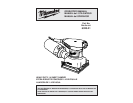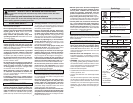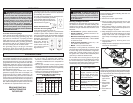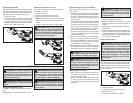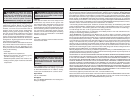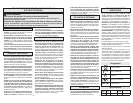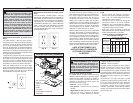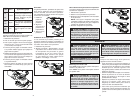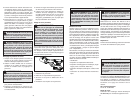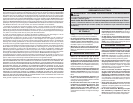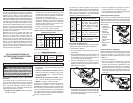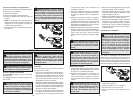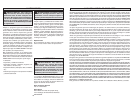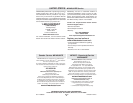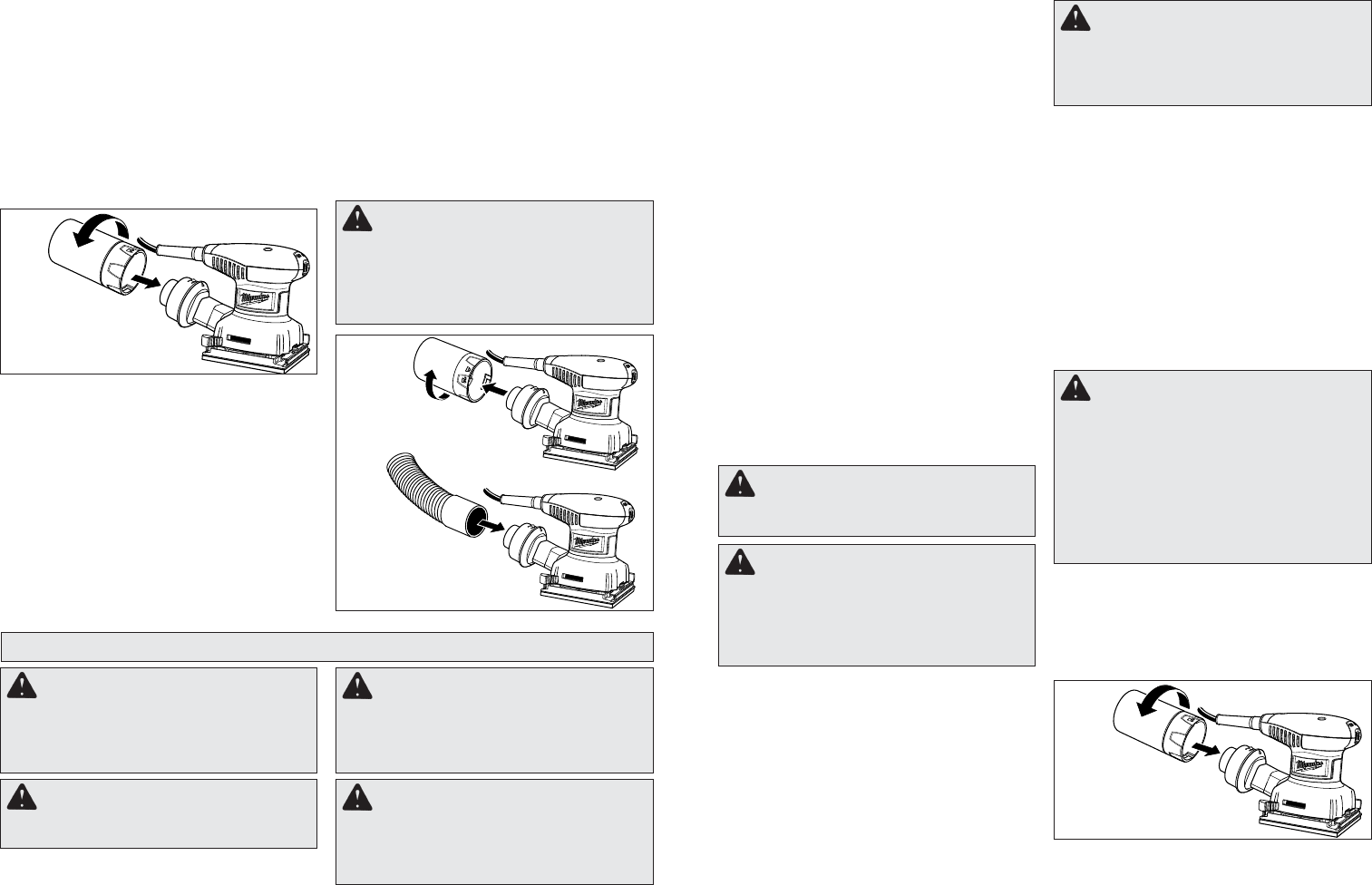
6
7
WARNING To reduce the risk of injury,
wear safety goggles or glasses with side
shields.
WARNING To reduce the risk of injury,
always unplug tool before attaching or remov-
ing accessories or making adjustments. Use
only specifi cally recommended accessories.
Others may be hazardous.
OPERATION
Fig. 3
Attaching The Dust Bag
The dust bag provides a dust collection system for
the sander. Sanding dust is drawn up through the
holes of the sanding platen and collected in the dust
bag during sanding. To attach the dust bag:
1. Unplug the sander.
2. Line up the “unlock” symbol on the dust bag with
the arrow on the dust collection port and slide
the bag assembly onto the port. To lock in place,
rotate the bag until the arrow on the port aligns
with the “lock” symbol on the bag.
Attaching the Sander to a Vacuum
You can easily attach the dust collection system of
the sander to a vacuum.
1. Unplug the sander.
2. Remove the dust bag from the sander.
3. Attach vacuum hose to blower exhaust.
NOTE: Smaller vacuum hoses fi t inside blower
exhaust. Larger vacuum hoses fi t outside blower
exhaust.
4. Connect sander and vacuum to power supply.
Fig. 4
WARNING When sander is not con-
nected to vacuum, always reinstall dust bag
assembly back onto sander. Fail ure to do so
could cause sanding dust or foreign objects to
be thrown into your face or eyes which could
result in possible serious injury.
Starting and Stopping the Tool
To start the sander, switch ON/OFF Switch to
ON.
To stop sander, switch ON/OFF Switch to OFF.
General Sanding with 1/4 Sheet Sanders
When using sanders there are a few things to
keep in mind:
• Varying pressure applied to the sander will affect
its speed. A light pressure is recommended for
fi ne work, moderate pressure for rough work.
Excessive pressure does not allow the pad to
move enough.
• Keep sanding pad fl at on the workpiece. Tipping
the sander or using the edges of the pad may
produce an uneven fi nish, and reduce pad life.
• Keep sander moving in broad even strokes
across the workpiece. Sanding in one spot too
long can cause gouging and uneven results.
1. To prevent rough action due to starting under
load, turn ON/OFF Switch ON before applying
sander to workpiece.
2. Work in slow, overlapping strokes parallel to
grain. Your Finishing Sander is designed for
even weight distribution. Excessive pressure
may damage workpiece and motor as well as
cause premature sandpaper wear.
3. Repeat operation using successively fi ner grits
of sandpaper until desired fi nish is obtained.
Example: 60 Coarse, 100 Medium, 150 Fine.
Removing Paint or Varnish
1. When removing several layers of paint or var-
nish, remove as much as possible with a paint
solvent or varnish remover.
2. Scrape away the residue with a putty knife
or other scraping tool and allow the surface
to cool and dry before applying sander to the
workpiece.
To empty the dust bag:
1. Unplug the sander.
2. Remove the dust bag from the sander.
3. Shake out the dust.
4. Reattach the dust bag to the sander.
Fig. 5
3. Select a coarse grit sandpaper disc to help pre-
vent the sandpaper from clogging.
4. Keep the sander moving over new areas to avoid
heating and softening the old coating (paint or
varnish).
5. Work in wide, overlapping strokes to produce a
uniform fi nish.
6. As the workpiece begins to show through the old
coating, switch to a medium grit sandpaper disc
to avoid scratching the surface of the workpiece.
Gradually switch to a fi ne grit sandpaper until
you achieve the desired fi nish.
Emptying the Dust Bag
For more effi cient operation, empty the dust bag
when it is no more than half full. This will permit the
air to fl ow through the bag better. Always empty
and clean the dust bag thoroughly upon comple-
tion of a sanding operation and before placing the
sander in storage.
WARNING Finish sanding can produce
clouds of fi ne dust that could ignite in the
presence of sparks or open fl ame. Always
wear a suitable dust mask or respirator and
use your sander in a well-ventilated area.
WARNING To reduce the risk of injury,
inspect for and remove all raised nails and
fasteners from workpiece before sanding.
Striking a fastener while sanding could cause
loss of control.
WARNING Properly secure workpiece
before sanding. Unsecured work could be
thrown towards the operator causing injury.
WARNING Do not wear loose cloth-
ing or jewelry when operating sander. They
could get caught in moving parts causing
serious injury. Keep head away from sander
and sanding area. Hair could be drawn into
sander causing serious injury.
WARNING To reduce the risk of fi re
and explosion, paint solvents and varnish
removers must be removed from the work-
piece and the workpiece must be completely
dry before sanding.
WARNING Collected sanding dust
from sanding surface coatings such as poly-
urethanes, linseed oil, etc. can self-ignite in
the sander dust bag or elsewhere and cause
fi re. To reduce the risk of fi re always empty
the dust bag frequently (10-15 minutes) while
sanding and never store or leave a sander
without totally emptying its dust bag. Also
follow the recommendations of the coatings
manufacturers.



